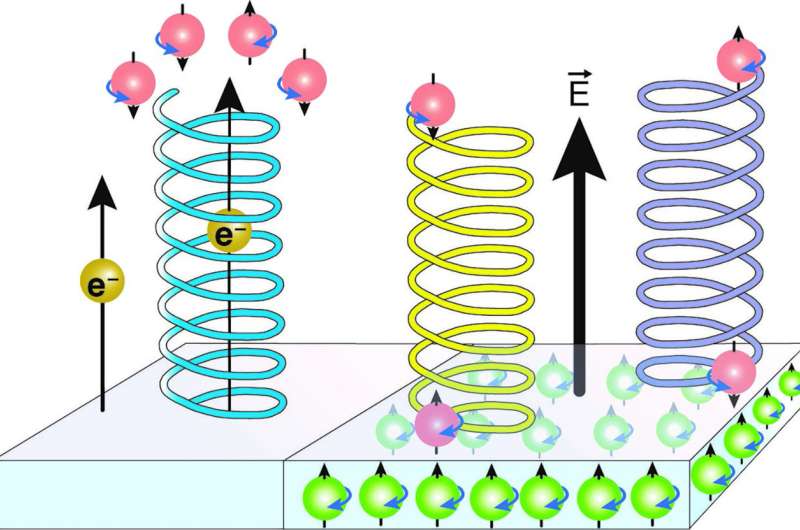Enantioselective Adsorption on Magnetic Surfaces
Mohammad Reza Safari, Frank Matthes, Vasile Caciuc, Nicolae Atodiresei, Claus M. Schneider, Karl-Heinz Ernst, Daniel E. Bürgler
First published: 28 December 2023
https://doi.org/10.1002/adma.202308666

Credit: Advanced Materials (2023). DOI: 10.1002/adma.202308666
Abstract
From the beginning of molecular theory, the interplay of chirality and magnetism has intrigued scientists. There is still the question if enantiospecific adsorption of chiral molecules occurs on magnetic surfaces. Enantiomer discrimination was conjectured to arise from chirality-induced spin separation within the molecules and exchange interaction with the substrate's magnetization. Here, it is shown that single helical aromatic hydrocarbons undergo enantioselective adsorption on ferromagnetic cobalt surfaces. Spin and chirality sensitive scanning tunneling microscopy reveals that molecules of opposite handedness prefer adsorption onto cobalt islands with opposite out-of-plane magnetization. As mobility ceases in the final chemisorbed state, it is concluded that enantioselection must occur in a physisorbed transient precursor state. State-of-the-art spin-resolved ab initio simulations support this scenario by refuting enantio-dependent chemisorption energies. These findings demonstrate that van der Waals interaction should also include spin-fluctuations which are crucial for molecular magnetochiral processes.
FREE PDF GRATIS: Advanced Materials







